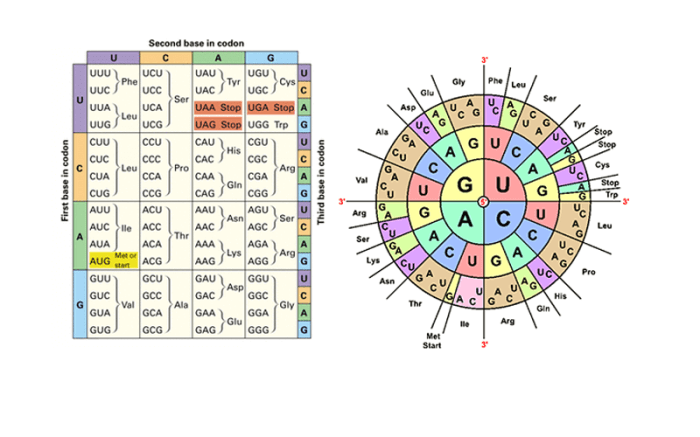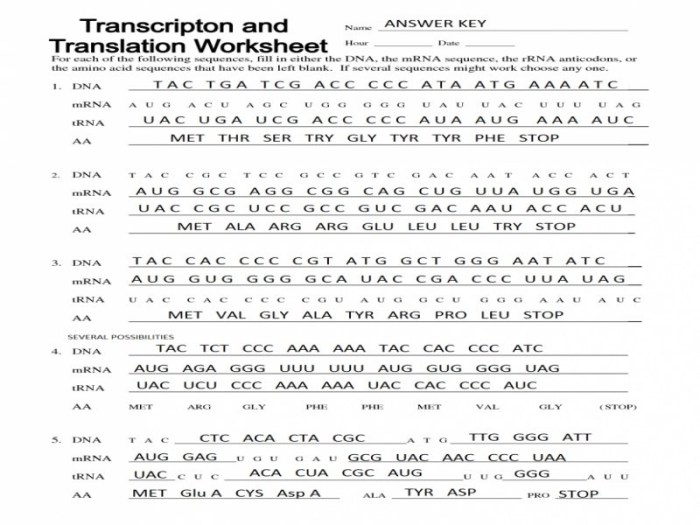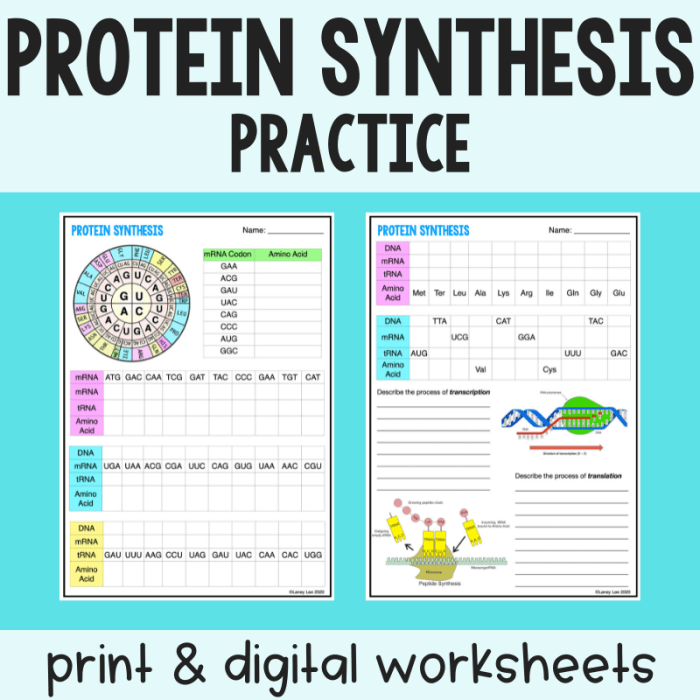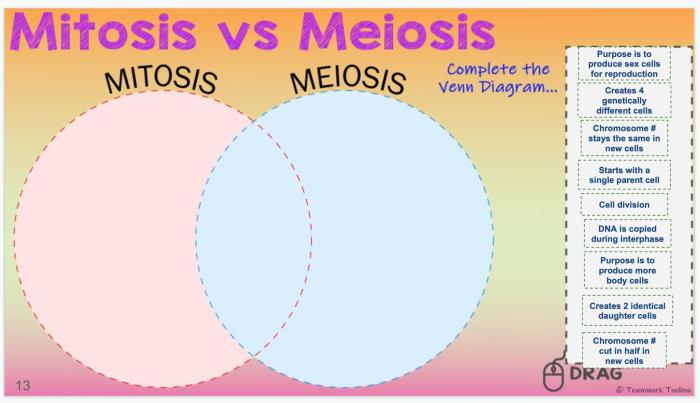Embark on a scientific odyssey with our comprehensive Protein Synthesis Practice 1 Worksheet Answer Key. This meticulously crafted guide illuminates the intricate process of protein synthesis, empowering you with a profound understanding of its molecular mechanisms.
Delve into the captivating world of mRNA, tRNA, and ribosomes, the key players in protein synthesis. Our detailed overview of the practice worksheet equips you with the tools to navigate its complexities, unraveling the secrets of protein synthesis with each question you conquer.
Protein Synthesis

Protein synthesis is the process by which cells create proteins. It is a complex process that involves many different molecules and organelles.
The Process of Protein Synthesis
The process of protein synthesis can be divided into two main steps: transcription and translation.
- Transcriptionis the process of copying the genetic code from DNA into a messenger RNA (mRNA) molecule.
- Translationis the process of using the mRNA molecule to create a protein.
The Role of mRNA, tRNA, and Ribosomes
mRNA, tRNA, and ribosomes are three essential molecules that play a role in protein synthesis.
- mRNAcarries the genetic code from the DNA to the ribosome.
- tRNAmolecules bring amino acids to the ribosome.
- Ribosomesare the organelles that assemble amino acids into proteins.
Practice 1 Worksheet
The practice 1 worksheet is a set of questions that are designed to help students learn about protein synthesis.
Examples of Questions, Protein synthesis practice 1 worksheet answer key
- What is the role of mRNA in protein synthesis?
- How do tRNA molecules bring amino acids to the ribosome?
- What is the function of ribosomes?
Answer Key

| Question | Answer | Rationale |
|---|---|---|
| What is the role of mRNA in protein synthesis? | mRNA carries the genetic code from the DNA to the ribosome. | mRNA is a copy of the genetic code that is used to direct the synthesis of a protein. |
| How do tRNA molecules bring amino acids to the ribosome? | tRNA molecules have an anticodon that binds to a complementary codon on the mRNA molecule. The tRNA molecule then brings the corresponding amino acid to the ribosome. | The anticodon on the tRNA molecule is complementary to the codon on the mRNA molecule. This allows the tRNA molecule to bind to the mRNA molecule and bring the corresponding amino acid to the ribosome. |
| What is the function of ribosomes? | Ribosomes are the organelles that assemble amino acids into proteins. | Ribosomes are large, complex organelles that are responsible for assembling amino acids into proteins. |
Additional Resources

- Khan Academy: Protein Synthesis
- BioInteractive: Protein Synthesis Animation
- PBS LearningMedia: Protein Synthesis
FAQ Section: Protein Synthesis Practice 1 Worksheet Answer Key
What is the role of mRNA in protein synthesis?
mRNA carries the genetic code from DNA to the ribosomes, where it serves as a template for protein synthesis.
How does tRNA participate in protein synthesis?
tRNA molecules bring specific amino acids to the ribosome, ensuring the correct sequence of amino acids in the growing protein chain.
What is the function of ribosomes in protein synthesis?
Ribosomes are the cellular machinery responsible for assembling amino acids into polypeptide chains, forming the final protein product.
